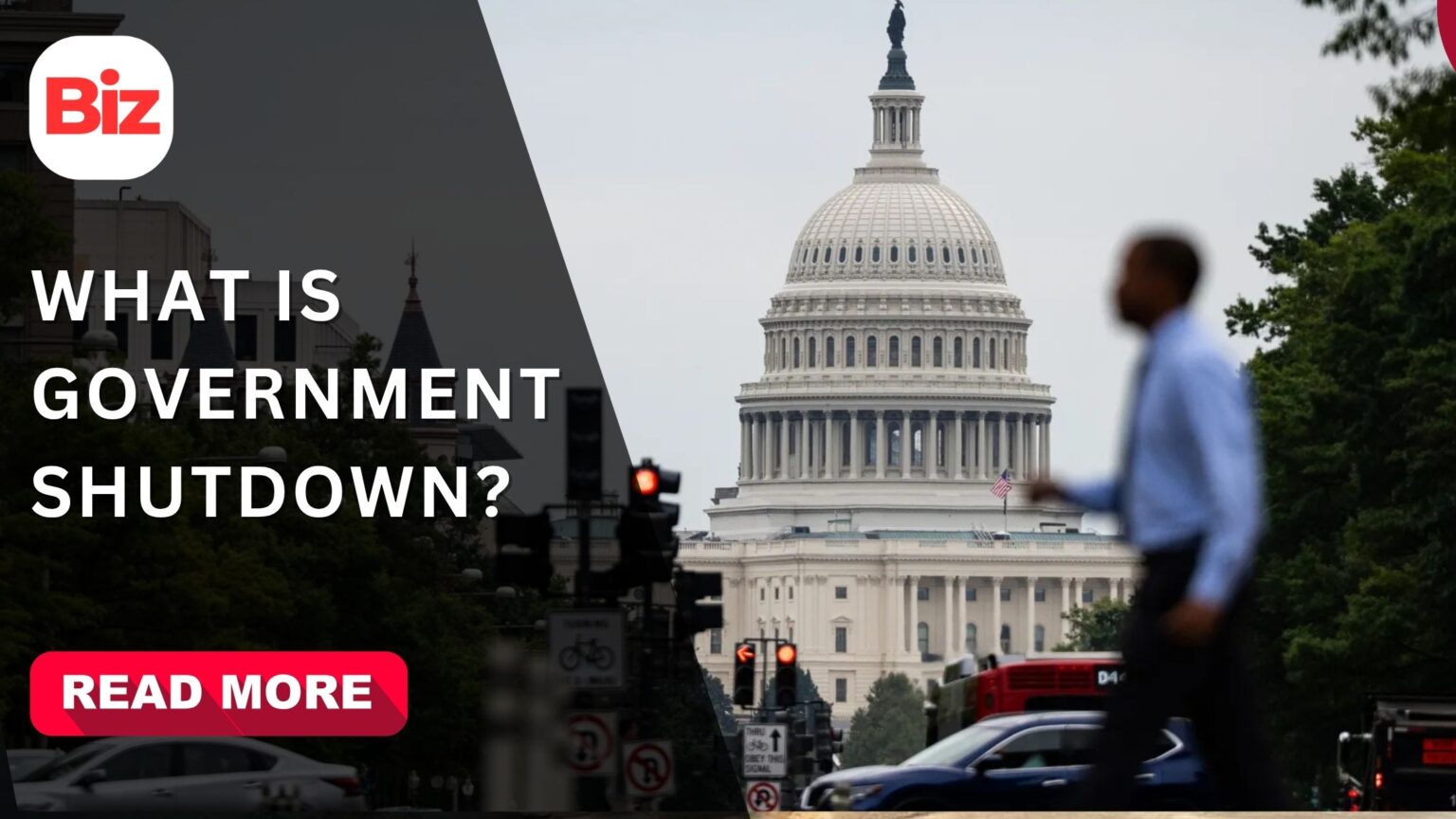- What is Government Shutdown?
- Shut-downs are of two kinds:
- Government Shutting History.
- The Senate Democrats vs. the Republicans: 2025 Showdown.
- The impact of Government Shut Down in 2025.
- Economic Impact
- The Politics of the Shut Down.
- Public Opinion on Shutdowns
- Possible Scenarios in avoiding the Shutdown.
- International Repercussions
- The Road Ahead
- Conclusion
Federal government shutdown in the US has been a constant specter in negotiations of the budget, and in 2025, the idea has come up again, taking center stage. Since political polarization has been at its peak point, the debate between senate democrats and their republican counterparts have turned into a fiscal standstill which is threatening to close down key government activities. This blog is a thorough update of the government shutdown, a definition of what constitutes a government shutdown, and the implications of a government shutdown in addition to an analysis of the imminent government shutdown deadline.
What is Government Shutdown?
Government shutdown takes place when congress does not enact adequate approvals bills or continuing resolutions to finance the operations and agencies of the federal government. Given that the US Constitution stipulates that the Congress must approve spending by the government, any failure to agree implies that agencies and departments will run short of money they are authorized to spend. When this happens they are left to either close down or reduce the activities awaiting the introduction of new laws.
Shut-downs are of two kinds:
Full Shutdown: The almost all non-essential federal agencies are shut down.
Partial Shutdown: A few bills appropriating funds are passed, so all the government does not come to a halt but only portions of it are allowed to operate.
In the case of a shutdown, necessary services including national security, law enforcement and emergency medical services are not impacted, but millions of federal workers are either put on furlough or must work without pay.
Government Shutting History.
This is not the first time there has been government shutdowns. Over the last 20 years since the concept of the modern congressional budget process was formalized in 1976, more than 20 shutdowns of varying durations have occurred. Notable examples include:
- 1995-1996: There was a 21 day walkout under President Bill Clinton regarding budget cut issues.
- 2013: There was a 16 day shutdown over Affordable Care Act difference of opinion.
- 2018-2019: The US experienced the longest ever shutdown in its history (35 days) during the Trump presidency, a shutdown focusing on the funding of a wall on the border.
All these previous closures point to the ability of budget disputes to destabilize the country, particularly when these conflicts are between various parties or branches of government.
The Senate Democrats vs. the Republicans: 2025 Showdown.
Tensions in Washington are building up as the deadline to the government shutdown nears 2025. Senate Democrats are advocating more finance in social programs, climate programs and healthcare expansion. In the meantime, the Republicans in the House and Senate are insisting on even more drastic reductions in discretionary spending, especially in areas such as education and renewable energy subsidies, and want to increase defense spending.
The stalemate is based on three issues which are:
- Spending Caps: Republicans are pushing hard on tight spending caps as a way of curbing the national deficit.
- Climate and Green Energy Programs: Democrats would like more money to be allocated to clean energy programs, which Republicans consider a waste of money.
- Healthcare Expansion: Democrats are advocating access to more affordable healthcare, opposing conservative fiscal priorities.
Such differences have stalled the Congress as the federal government shutdown threat looms.
The impact of Government Shut Down in 2025.
The consequences of a shutdown are far reaching, not only to federal workers, but also the whole economy and society. In the event that the federal government shutdown goes into effect in 2025, the most probable effects are as follows:
- Federal workers and Contractors.
- Approximately 2.1 million of the civilian federal workers are either on furlough or unpaid.
- Local economies also lose income since federal contractors lose income.
- Public Services Disrupted
- Museums and national parks are closed or staffed with a few people.
- There is a lot of slowness in passport and visa processing.
- Lending to small businesses is stopped.
Economic Impact
- The government shutdown might cost billions of wasted productivity and consumer confidence.
- The 2019 shutdown on its own cost the economy an estimated 11 billion dollars with 3billion lost forever.
- Markets and Credit Ratings
- Uncertainty causes investor confidence to decline.
- Rating agencies can lower credit ratings of the US government, which increases the cost of borrowing.
- The payments of social security and Medicare are maintained, though the work of customer services is reduced to a minimum.
The shutdown may be extended and food assistance programs will run out of funds.
The Politics of the Shut Down.
An update on the government shutdown would not be complete without considering politics behind the crisis. It is not merely about the figures, but it is a symbolic struggle over the future of the nation.
Democrats in the senate believe that it is important to invest in healthcare, education, and climate programs to grow in the long-term.
The Republicans respond that unrestrained expenditure will explode national debt which will weigh down on the generations to come.
It is not only the collision course of fiscal responsibility but also of basically different visions of the American future.
Public Opinion on Shutdowns
The people of America are split on closing down of the government, but there has always been anger among the people on the two sides when Washington cannot rule them effectively. The surveys indicate that the citizens desire to be fiscally responsible, but they do not like the inconveniences shutdowns bring to their lives. History shows that the party that is seen to have imposed a shutdown is likely to lose political ground in later elections.
The present 2025 scenario early polling indicates that voters can point more blame at Republicans in case there is a shutdown, and this is mainly because of the insistence on tougher spending caps.
Possible Scenarios in avoiding the Shutdown.
With the government shutdown deadline looming, a number of possibilities may arise:
Short Term Continuing Resolution (CR).
A temporary funding bill might be passed by congress to allow the government to remain open in the meantime as negotiations proceeded. This is a strategy that will not end in a direct closure yet will not address the root causes of conflicts.
Grand Bargain
The two may reach a holistic agreement with compromise in spending, which may deal with long term debt and priorities in funding.
Prolonged Shutdown
Unless one of the parties gives in, the nation might experience an extended federal government shutdown that will affect millions of lives and harm the economy.
International Repercussions
There is also a ripple effect of a US government shutdown. It is considered by all allies and trading partners as a sign of political instability that could have an impact on international trust in the US economy and its global leadership capacity. A long term shutdown would undermine the dollar, stock markets and make foreign policy initiatives difficult.
The Road Ahead
The budget battle in 2025 highlights the weakness of the American system of governance. Although shutdowns have become a very common aspect in the political process, it is not a sustainable solution. The repetitive crises underscore more structural problems like hyper-partisanship, absence of compromise and politicization of everyday governance.
As a citizen, it is of great essence to keep posted with the trusted government shutdown updates. Consciousness is another benefit that is valuable as it is prepared to overcome the disruption and responsible among the elected officials.
Conclusion
The looming federal government shutdown of 2025 is not just the momentary disruption of government services. It is part of the larger ideological struggles that define the United States. As negotiations between Senate Democrats and Republicans are fierce, the decision will have far reaching consequences both to the economy and the course of national policy.
With the government shutdown deadline looming, Americans are waiting with tense fingers to get a solution. The actions taken in Washington, be it compromise, temporary funding or a complete shutdown, will reverberate way beyond Capitol Hill, and will carve out the economic and political landscape of the country in the years to come.
ALSO READ US to Review 55 Million Visas for Immigration Rule Compliance








